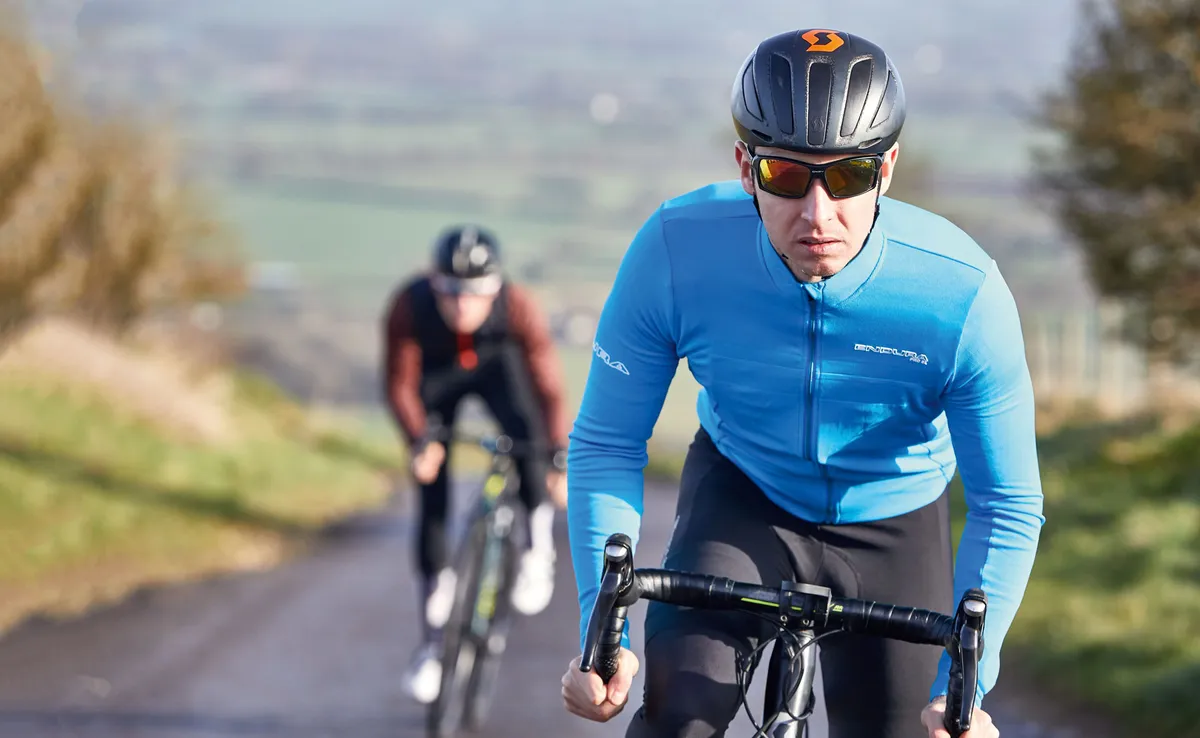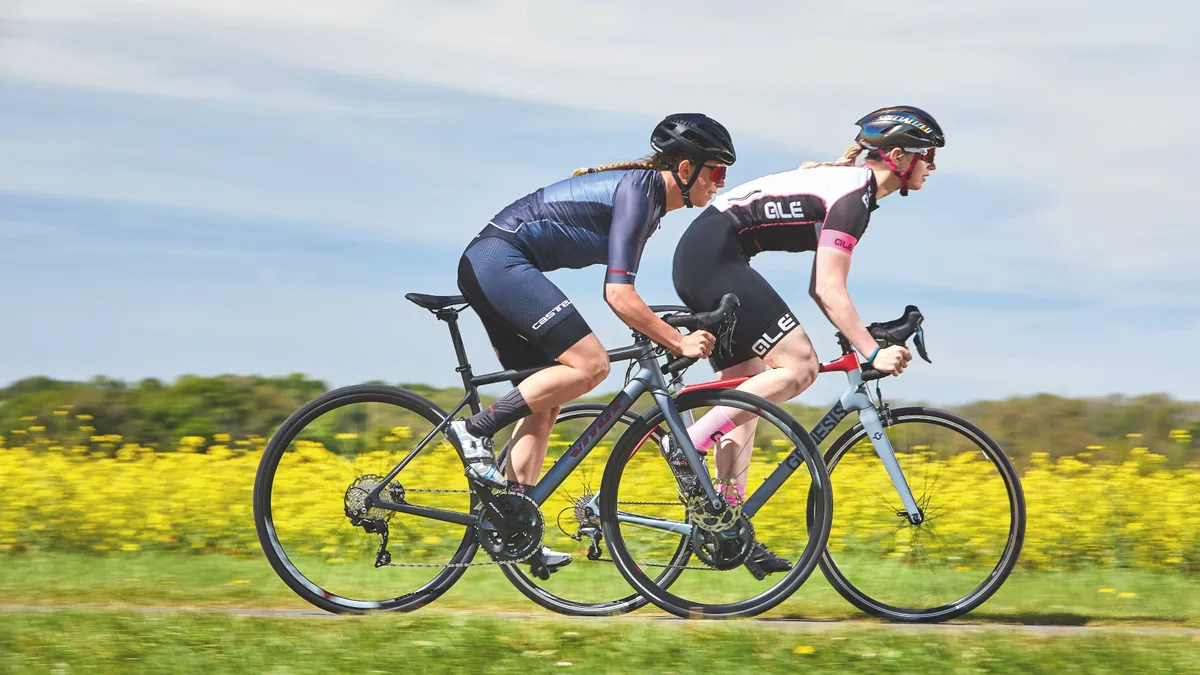If you’re embarking on a training plan, chances are you’ll have come across ‘sweetspot’ workouts.
Before you get too excited, it doesn’t mean a club run with multiple cafe stops. Instead, it refers to the intensity of that particular training session.
But how does sweetspot training differ from, say, base training or high-intensity interval training? And why should you consider including sweetspot sessions as part of your training?
What is sweetspot training?
As we’ve already alluded to, the term sweetspot refers to the intensity of a workout. According to Matt Rowe of Rowe & King Cycle Coaching, it typically means an intensity between the upper end of zone three and the lower end of zone four, if you're training with a power meter or using training zones.
“I define sweetspot using Dr Andrew Coggan’s approach, which is 88 to 93 per cent of your FTP (Functional Threshold Power)," says Rowe. "Or around 75 to 85 per cent of your maximum heart rate.”
When training at sweetspot intensity, you are placing your body under sustained stress, but not so much that you can’t hold the effort for a long duration.
The efforts are also repeatable, without inducing high levels of fatigue. As the name suggests, you’re training at a level that hits the sweetspot between intensity and volume.
On a cellular level, training at sweetspot increases your mitochondria density, according to Rowe.
“Mitochondria are small structures found in almost all human cells,” he says. “Their main job is to perform cellular respiration – taking in nutrients from the cell, breaking them down and turning those nutrients into energy.
“The mitochondria are the powerhouses of the cell and, by increasing your mitochondria density, you’re making your body able to create energy more easily.
“Ultimately, through doing sweetspot training, you will feel an increased sense of fitness – in terms of ‘engine size’, threshold and ability to produce energy.”

What are the benefits of sweetspot training?
In addition to the physiological adaptations that take place as a result of sweetspot training, there are a number of benefits from riding on the cusp of tempo and threshold.
“Sweetspot offers the most bang for your buck in terms of training,” says Matt Bottrill of Matt Bottrill Performance Coaching. “If you’re limited on time, you want to maximise what you do have.
“It’s quality training and probably one of the most beneficial ways to get fit."
Rather than slogging away for hours on base rides as part of your winter training, sweetspot training produces similar physiological adaptations and training effects from a much shorter session. As a result, you'll still expect to reap the rewards in a Zwift FTP test.
This justifies its place among the turbo trainer workouts in the armoury of the time-poor cyclist – or, in other words, anyone who isn’t a professional. Therefore, sweetspot intervals enhance the benefits of indoor cycling.
“For a cyclist who works and hasn’t got much time – maybe only four to six hours per week of training time – doing a couple of blocks of sweetspot in an hour’s turbo or Zwift session can give you the physiological benefits of a much longer ride,” says Rowe.
In short, sweetspot has the potential to fast-track your aerobic performance – increasing your Functional Threshold Power at the same time. “The net result is that you will be able to produce more power and ride faster for longer,” says Rowe.
What’s more, because sweetspot training is aerobic (not anaerobic), the sessions are repeatable and rewarding, helping to keep motivation up compared to a painful, lung-busting threshold or HIIT workout.

Are there any drawbacks to sweetspot training?
While sweetspot training has a number of benefits, it’s important to not become one-dimensional in your training, otherwise you risk neglecting other areas of your cycling fitness, such as VO2 max.
“You’ll reach a ceiling,” explains Bottrill. “Once you’ve built the phase of sweetspot, you’re going to cap it, and you then want to progress to doing more [high-intensity] interval work.”
While sweetspot is particularly well-suited to riders training for endurance events and long time trials, as well as alpine climbs, that doesn’t mean it’s a catch-all training solution for all cyclists.
“It’s not suited to everyone,” says Rowe. “A track sprinter, for example, wouldn’t do a lot of sweetspot training. They don’t need endurance and all their training is top-end – in the gym, they’ll either be doing their max or going super-easy to recover.
“Sweetspot training builds the aerobic side of things, while track sprinting is an anaerobic sport.”
The key is identifying the demands of the event or goal you are training towards and adapting your workouts accordingly. That will help you focus on the areas required to produce your best performance.
Three-time track world champion and Olympic gold medallist Dani Rowe says sweetspot workouts would be “few and far between” for sprinters. “It’s suited to cyclists at the endurance end of the sport," she says.
How can I include sweetspot in my training plan?
First of all, you need to identify your training zones, regardless of whether you train with heart rate, use a power meter, or are in your pain cave on a smart bike or a smart trainer.
Once you’ve built up an initial base level of fitness, both Bottrill and Rowe recommend including one or two sweetspot sessions per week in a training plan.
Zwift includes sweetspot sessions in its structured workouts and training plans.
The best Zwift setup, including turbo trainer accessories, will keep you entertained, hydrated and fuelled through these demanding workouts. You'll find similar sessions on other indoor cycling apps, such as Rouvy, TrainerRoad and Wahoo SYSTM.
If you are new to structured training, Bottrill and Rowe advise starting with five- or 10-minute sweetspot intervals, before working up to 20 minutes. As your fitness improves, you can increase the number of intervals within a session.
"Once you’ve mastered 20 minutes at sweetspot, you can build up to 2x 15 minutes and 2x 20 minutes,” says Bottrill. The end goal, he says, is a workout with an hour at sweetspot intensity. “Once you get to that hour, you’ll fly,” he adds.

Example sweetspot workouts
Here are three sweetspot workouts, for beginner, intermediate and advanced riders.
Matt Rowe recommends using the turbo trainer for these sessions. "If you were to complete the session on Zwift with ERG mode on [so the trainer automatically sets the resistance according to your training zones], it takes all the thinking out of it,” he says.
Matt Bottrill’s beginner sweetspot workout
- Warm up for 10 minutes
- 5 minutes at sweetspot
- 4 minutes recovery
- 4 minutes at sweetspot
- 3 minutes recovery
- 3 minutes at sweetspot
- 2 minutes recovery
- 2 minutes at sweetspot
- 1 minute recovery
- 1 minute at sweetspot
- Cool down
Matt Bottrill’s intermediate sweetspot workout
- Warm up for 10 minutes – keep cadence relatively high (90-100RPM)
- 10 minutes sweetspot (90% FTP) at race cadence
- 5 minutes recovery with relatively high cadence (90-100RPM)
- 10 minutes sweetspot (90% FTP) at race cadence
- 5 minutes recovery with relatively high cadence (90-100RPM)
- 10 minutes sweetspot (90% FTP) at race cadence
- Cool down
Luke Rowe’s advanced sweetspot workout
- 10 minutes progressive warm-up
- 20 minutes at sweet spot (90% FTP)
- 5 minutes easy (zone one)
- 20 minutes at sweet spot (90% FTP)
- 5 minutes cool down
